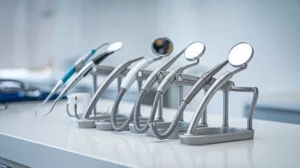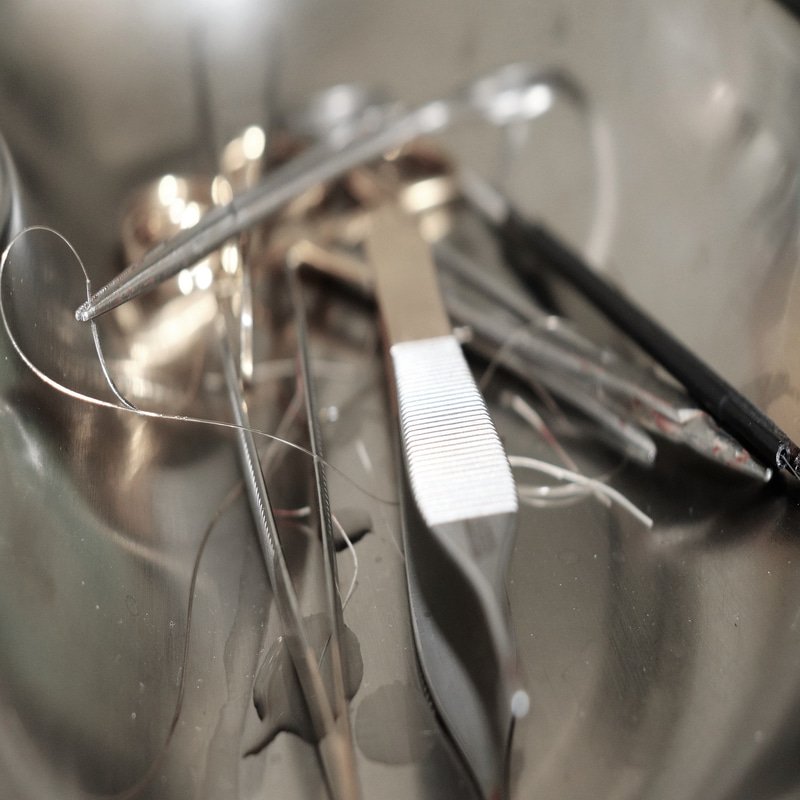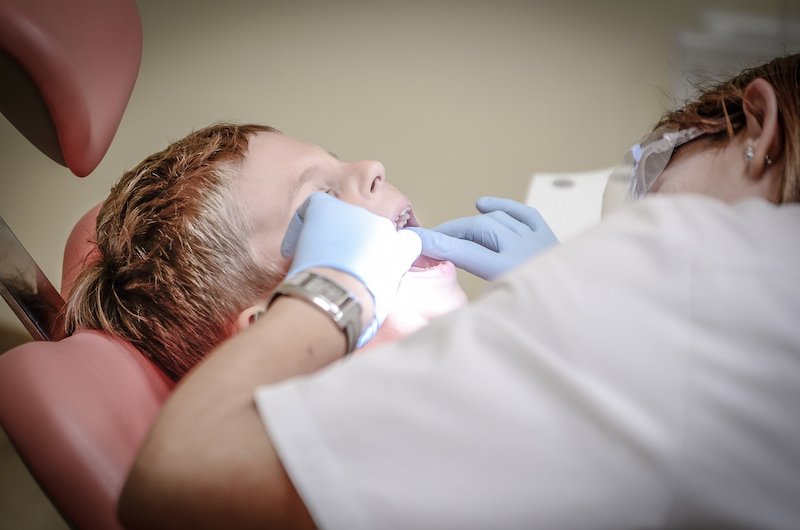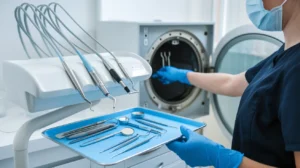
How to Choose the Best Dental Mouth Mirror for Oral Care
Picking the right dental mouth mirror might seem like a small task, but it’s actually pretty important for keeping your teeth and gums healthy. With so many options out there,

Orthodontic and surgical procedures in dentistry demand the highest precision and quality in the instruments utilized. The selection of the best orthodontic surgical instruments transcends mere tool picking; it is integral to the success and safety of treatments.
For both orthodontists and dental surgeons, the choice of instruments significantly impacts the outcomes of their procedures. The careful manipulation of orthodontic wires and brackets, along with the precise cuts by surgical scalpels, underscores the pivotal role each instrument plays in patient treatment.
In orthodontics, tools like pliers, band pushers, and probes are indispensable for teeth alignment and malocclusion correction. Surgical tools such as forceps, elevators, and bone files are essential for tooth extractions, bone smoothing, and superior patient care. These instruments, typically made from high-quality stainless steel, are selected for their durability, strength, and compatibility with stringent sterilization protocols.
This guide will navigate you through selecting the finest orthodontic surgical instruments, focusing on quality, ergonomics, and maintenance. By the conclusion of this guide, you’ll be equipped with the knowledge to make choices that elevate your practice and ensure precise treatment for your patients.
Orthodontic instruments are categorized based on their specific functions and the tasks they are meant to accomplish. This classification enables orthodontists and dental professionals to efficiently identify and select the appropriate tool for every procedure. The primary categories of orthodontic instruments include:
Dental instruments are generally grouped into several functional categories, such as diagnostic, cutting and dissecting, restorative, periodontal, orthodontic, and surgical instruments. Within the orthodontic category, instruments are further classified according to their roles in correcting malocclusions and aligning teeth.
Examples of orthodontic instruments are pliers, bracket positioning instruments, and various specialized tools, each designed for specific tasks like wire bending, band removal, bracket placement, and contouring of dental materials.

Several key instruments are essential for orthodontic treatments, each possessing unique features and functions.
Some of the most important ones include:
Pliers: Orthodontic pliers are versatile tools available in various types. Band remover pliers are utilized for removing orthodontic bands and adhesives, while distal cutting pliers are crafted for cutting archwires both extraorally and intraorally. Rose pliers, known for their double flat active parts, are perfect for bending and shaping steel wires.
Weingart pliers are instrumental in guiding and moving the orthodontic archwire into the brackets and tubes.
Bracket Positioning Instruments: These tools aid in the placement and securing of brackets on teeth. They include devices like bracket tweezers and ligature directors, which are essential for accurately positioning the brackets and securing them with ligatures or adhesives.
Specialized Pliers: Specialized pliers, such as Adams pliers, Arrow pliers, and Mathieu pliers, are intended for more complex tasks. Adams pliers are utilized for fabricating the Adams clasp and adjusting facebows and headgears. Arrow pliers are designed to bend closures in the shape of an arrow, whereas Mathieu pliers feature a three-step locking mechanism for swiftly placing elastomeric ligatures.
Separator Placing Pliers: These pliers are specifically used to place elastic separators interproximally to generate space for orthodontic bands. They are designed for a comfortable palm grasp and are available in various sizes and shapes.
Grasping these classifications and understanding the specific roles of each instrument are fundamental for effective orthodontic treatment. It guarantees the use of the correct tool for each procedure, enhancing precision, safety, and the overall quality of care provided to patients.
When selecting orthodontic instruments, prioritizing material and quality is essential. Opt for instruments crafted from durable materials like surgical-grade stainless steel, renowned for its strength, corrosion resistance, and capability to endure rigorous sterilization. The metal alloy’s composition, particularly carbon and chromium levels, plays a vital role in the instrument’s durability and sharpness.
Instruments featuring carbide inserts at their tips, such as ligature and wire cutters, stand out for maintaining sharpness longer and resisting scoring marks. Ensuring these inserts are seamlessly integrated into the instrument is essential to avoid separation during use or sterilization.
The manufacturing process, including annealing and cold-working for instruments like stainless steel wires, significantly influences their clinical characteristics, performance, and longevity. Steer clear of instruments made from lower-quality materials, like those with chrome plating, which may reveal inferior steel beneath, to preserve your tools’ integrity.

The ergonomic design of orthodontic instruments plays a critical role in the comfort and efficiency of the practitioner. Ergonomically designed handles minimize hand fatigue and provide steady precision during procedures, enhancing both efficiency and patient safety.
Longer handles may benefit certain procedures, but ensuring a comfortable fit in the operator’s hand is essential. Testing instruments before a significant purchase is recommended to confirm a good fit and comfortable usage. Additionally, the type of joint in the instrument, such as orbit or box joints, influences how the tips align after repeated use and sterilization, affecting the instrument’s performance and longevity.
Precision and effectiveness are critical when choosing orthodontic instruments. Select each instrument for its specific application and the task it is designed to perform. Wire cutters and ligature cutters, for instance, have specific wire size restrictions; exceeding these can lead to tip scoring or dulling.
Tools like the Weingart plier, for inserting archwires into brackets, and the bird-beak plier, for making finishing bends, should be chosen for their precise performance capabilities. The accuracy of these instruments ensures effective orthodontic treatment, satisfying both practitioner and patient expectations.
Moreover, an instrument’s versatility can be advantageous, reducing workspace clutter and streamlining treatments. However, this versatility should not compromise the instrument’s effectiveness.
Sterilization of orthodontic instruments is a critical step in ensuring infection control and patient safety. Several sterilization techniques are recommended, each with its own set of guidelines and precautions.
Steam autoclaving is the most commonly recommended method for sterilizing orthodontic instruments. This process involves sterilizing instruments at temperatures between 250 to 273 degrees Fahrenheit, with 18 to 21 pounds of pressure per square inch. It is essential to use a pre-vacuum/Class B sterilizer, as gravity sterilizers are not suitable for hinged instruments. Instruments should be sterilized in the open position to ensure that the steam can reach all surfaces.
Dry heat sterilization, although less commonly used due to its limitations, can be employed but requires careful consideration. This method involves higher temperatures, typically between 375 to over 400 degrees Fahrenheit, which can damage some materials and mechanisms. It is generally not recommended for instruments with plastic components or complex mechanisms.
Other methods include unsaturated chemical vapor sterilization and ethylene oxide sterilization. These methods are particularly useful for instruments that cannot withstand high temperatures. However, they require careful handling and adherence to specific protocols to avoid damage to the instruments.
For particularly resistant pathogens like prions, more stringent protocols are necessary. This includes autoclave cycles at 121°C for 60 minutes or 134°C for at least 18 minutes, or combination cycles involving hot air sterilization followed by autoclaving.
Proper maintenance of orthodontic instruments is essential for their longevity and effectiveness. Here are some key tips to follow:
Before sterilization, instruments should be thoroughly cleaned to remove any debris, blood, or saliva. This can be done using an ultrasonic cleaning machine or by hand with a non-enzymatic, phosphate-free solution. Avoid using enzymatic cleaners or solutions that are acidic, as they can damage the instruments, especially those with carbide tips.

After cleaning, ensure that the instruments are free from excess moisture. Water drops or disinfectant residue can lead to corrosion, especially on stainless steel instruments. Proper lubrication of the instruments after sterilization is also essential; use food-grade lubricants to prevent toxicity and maintain the smooth operation of hinged instruments.
Storage of sterilized instruments is another critical aspect. Instruments should remain packaged until use to prevent contamination. Using cassettes or specialized pouches, such as the IDEAL Orthodontic Sterilization Pouches, can help in organizing and storing instruments efficiently. These pouches often come with internal and external chemical indicators that validate the sterilization process.
Regular monitoring of the sterilization equipment and processes is vital. This includes mechanical, chemical, and biological indicators to ensure that the sterilization process is effective and consistent. Biological indicators, which test the sterilizer’s ability to kill highly resistant microorganisms, are the most stringent method for validating the sterilization process.
When it comes to investing in orthodontic instruments, the balance between cost and quality is essential.
While it might be tempting to opt for cheaper alternatives, the long-term benefits of high-quality instruments far outweigh the initial savings. High-quality instruments, often made from premium materials such as surgical-grade stainless steel, are designed to last longer and perform more effectively.
This durability reduces the need for frequent replacements, which can save money in the long run.
The cost of orthodontic instruments can vary widely. For instance, basic orthodontic supplies like metal bands, brackets, and archwires can range from $150 to $350 per case, depending on the brand and quality. However, investing in premium brands that offer advanced features and superior materials can increase the cost, sometimes up to $800 or even $3000 for specialized systems like lingual orthodontics.
Despite the higher upfront cost, high-quality instruments typically require less maintenance and have a longer lifespan.
They also tend to perform better, reducing the risk of complications and the need for additional procedures. This not only enhances patient care but also minimizes the overall cost of treatment by reducing chair time and the need for repeat procedures.
Choosing the right brand and manufacturer is essential when investing in high-quality orthodontic instruments.
Reputable brands like ProDentUSA, G&H Orthodontics, and 3M Health Care are known for their commitment to quality and durability. These brands often manufacture their own products, ensuring strict quality control and adherence to high standards.
ProDentUSA, for example, stands out for its Siberian Stone technology, which ensures that their pliers and cutters have a lasting working edge. Their products come with a lifetime guarantee, reflecting their confidence in the quality of their instruments.
Similarly, G&H Orthodontics and 3M Health Care offer a range of high-quality instruments that are designed to meet the specific needs of orthodontic practices.
It is also important to consider the warranties and support offered by the manufacturer. High-quality brands often provide comprehensive warranties and maintenance guidelines to ensure that their instruments remain in optimal condition. Understanding the sterilization requirements and maintenance protocols recommended by the manufacturer can help extend the life of the instruments and maintain their performance.
In conclusion, selecting the best orthodontic surgical instruments is an important decision that impacts the success and safety of your treatments.
Remember to understand your practice’s specific needs, prioritize quality over quantity, and consider the ergonomics and versatility of the instruments. High-quality instruments, often made from surgical-grade stainless steel, are essential for durability and precision.
Proper maintenance and sterilization techniques are vital to extend the life of these instruments. By investing in the right tools and following best practices in maintenance and sterilization, you can enhance patient care, reduce complications, and elevate the reputation of your practice. Take the time to research, seek feedback, and choose instruments that align with your needs, ensuring that every procedure is carried out with precision and excellence.

Picking the right dental mouth mirror might seem like a small task, but it’s actually pretty important for keeping your teeth and gums healthy. With so many options out there,

Dental mirrors have come a long way. From simple reflective tools to sophisticated gadgets, they play a key role in modern dentistry. With constant innovation in dental mirrors, these aren’t

Hey there, dental pros! Today, we’re diving into something super important but often overlooked—how to properly mouth mirror sterilization. If you’re in the dental field, you know these little tools
At The Surgical Kit, we are committed to providing healthcare professionals with the finest tools to ensure precision and safety in every procedure.